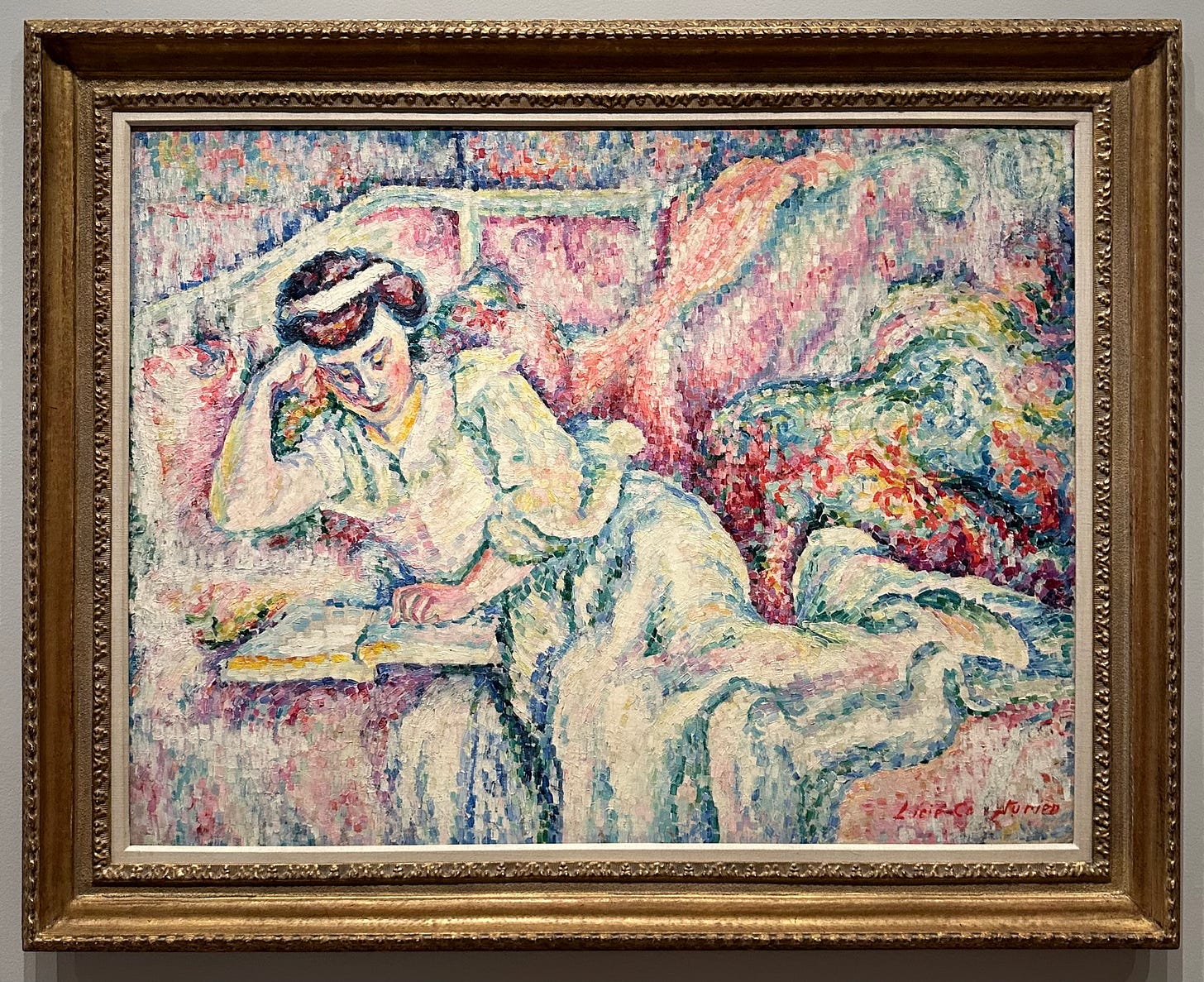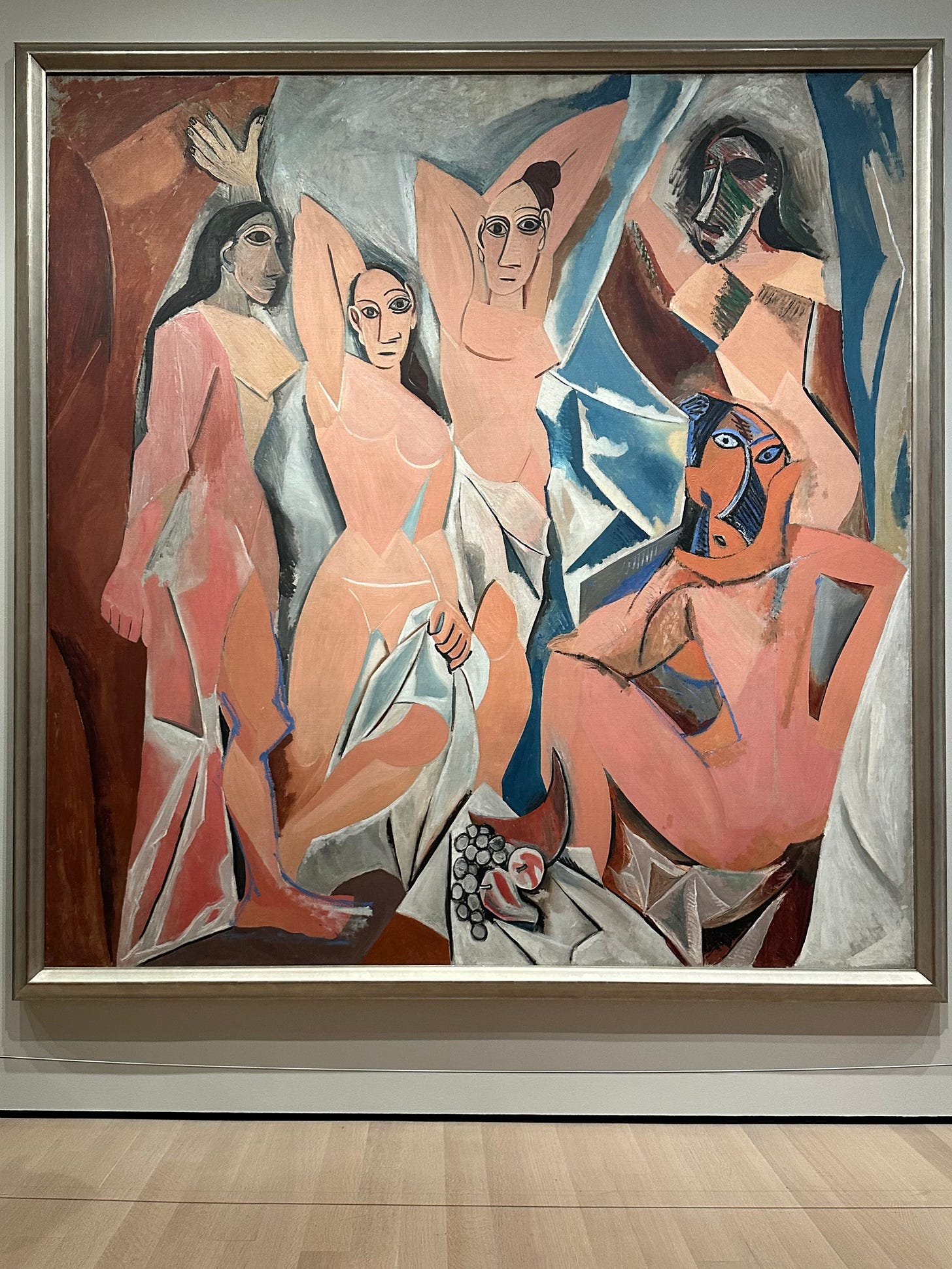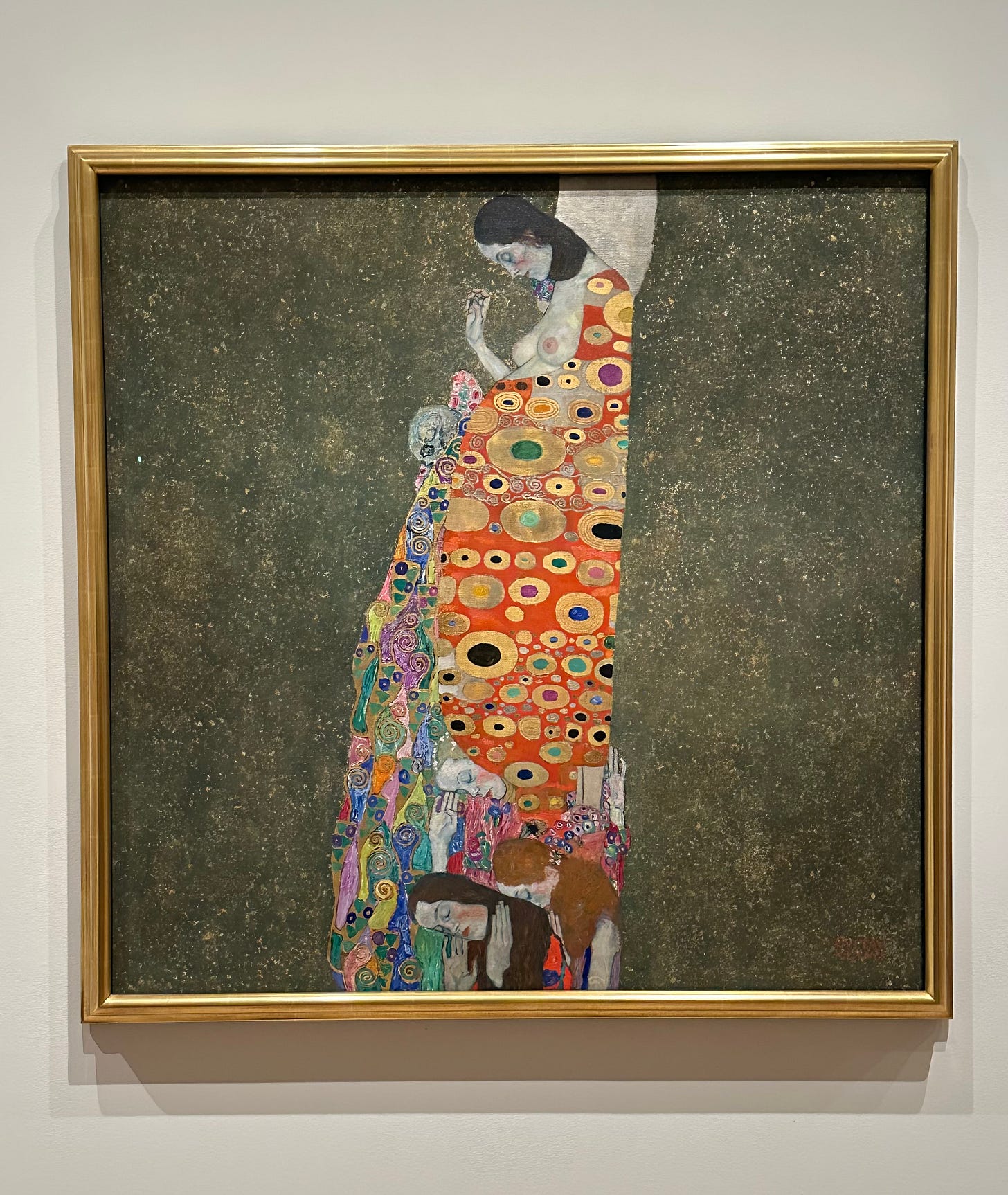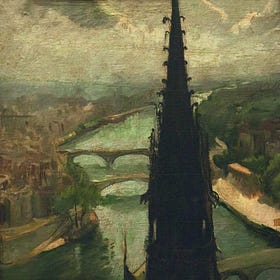Book Pairings for Modern Art, Part 1
An afternoon at the Museum of Modern Art in New York City
There are few better ways to spend a weekend afternoon than at an art museum — and unless it’s one of the two days of the year that the weather is perfect sunny 68, a museum is the perfect respite from snowy storms, spring rains, and relentless summer heat.
~ Usually, Saturday newsletters are a perk for paid subscribers. Today, we’re making this one free to all! If you find our writing valuable and would like to show your support, you can upgrade to a paid subscription. We are so grateful for your time and attention! ~
My usual haunt is the Metropolitan Museum of Art, not only for their incredible collections of the impressionists and Dutch masters, but also for their special exhibits which have ranged from fashion, to in-depth explorations of individual artists, to Disney animation.
But lately, I have been able to visit the Museum of Modern Art (MoMA) a few times, and it has grown on me. While I’ve previously dismissed a lot of modern art as too abstract for me (some of it still is), this time, I found that the longer I spent with some of these paintings, the more I appreciated what they were trying to tell me.
At some point I had the splendid idea to pair paintings with books, and so here are five works from the MoMA that stood out to me, and books to go along with them. I hope you, too, will enjoy these marvelous pieces of artwork this Saturday.
(And if you want more, you can check out Part 2 here).
Les Demoiselles d’Avignon
Pablo Picasso
The MoMA houses a large collection of Picasso’s work, but this one might be the largest. The women in this painting are meant to be prostitutes working in a famous Paris brothel — and while this might be an easy conclusion to draw based on their nudity, these women are radically different from most female subjects of male art throughout history. Because as the male gaze objectifies them, they don’t turn away demurely; they stare right back.
The bold, almost daring expressions I see in these women make me think of the works of Anaïs Nin. Anaïs Nin was a shocking and radical figure who wrote unflinchingly about liberation and inner worlds. And though any of her novels or short stories demonstrate the depths to which she explored female pleasure, it is The Diaries of Anaïs Nin that provide the most personal, and touching stories.
Read more about this painting.
Hope II
Gustav Klimt
I am not a mother, nor have I experienced pregnancy, but for some reason on this visit to MoMA I found myself drawn to this painting by Gustav Klimt.1 Though his most famous painting is probably The Kiss, I find his lesser known works to be so much more compelling — as I looked across the canvas, I found myself wondering about the connections between life and death, the sacrifices a woman makes to become pregnancy, and the death of a part of her that occurs when she finds she is growing a child in her body.
Morbid, yes. But frequent readers will know that I love gothic fiction — I am so drawn to the juxtaposition of life and death, these opposing forces. And thinking about the dark sides of pregnancy, I am reminded of The Garden by Clare Beams. Though I liked her previous novel, The Illness Lesson, much better, I was still intrigued by the way she explored pregnancy and its perils in this book.
It also prompts me to pick up The Long Answer by Anna Hogeland, a book I heard about from
at FictionMatters — a book in which a woman considers pregnancy, motherhood, and the nature of female relationships.Dynamic Heiroglyphic of the Bal Tabarin
Gino Severini
Gino Severini knew and interacted with big names in Cubism including Pablo Picasso and Georges Braque — but looking at this painting, I see something very different from the work of those artists. Rather than the sharp lines and disjointed parts that make up Picasso’s guitars, I see a whirling kaleidoscope of people and things in motion. The canvas conveys the livelihood and chaos of a dance hall, but it strays a bit outside of the ordinary world by indulging in the absurd and magical: look to the top left corner to see a miniature naked woman riding a pair of scissors, or a bit to the right, where you can see a sheep atop a camel. There is also something a bit sinister about how the forms are broken up.
Read more about this painting.
Thinking about these elements, my thoughts immediately go to Jonathan Strange and Mr. Norrell. Though the ballroom scenes are just one part of this gigantic book, they are an important part — at these enchanted parties, there are fairies and other magical beings, but there is also a dark secret that cuts into the supposed enjoyment, much like the fragments of the painting above. If you’ve read this book, or if you need more convincing to pick it up, check out a great analysis of this book over at The Crossroads Gazette by
.The Persistence of Memory
Salvador Dali
The first thing that strikes an observer of this painting is how small it is. In fact, I had to stand very close to it (risking the blaring alarms that might go off) to see the ants that cover the pocket watch, and the fly that sits on one of the melting clocks.
There is a lot to unpack with regards to surrealism and its evolution, but the most interesting part of this painting to me is how changing and malleable time is, especially compared to natural elements like the tree, mountains, and even insects. In fact, it is implied that it is our perception of time that is soft and fluid.
There are two books that come to mind when I think about the passing of time, and the way our emotions and memories change with time: The Remains of the Day by Kazuo Ishiguro and To the Lighthouse by Virginia Woolf. Both are books that I know I haven’t probed to the fullest, and I’m eager to revisit them in the future.
Read more about this painting.
Untitled
Lee Bontecou
I walked by this work on the way to another gallery, but I felt pulled into the dark center of this sculptural piece. I stopped in front of it, curious what was inside, but too afraid to lean in. I was irrationally scared that I would be pulled into this industrial laundromat from another world.
I immediately thought of Paul Auster’s The New York Trilogy, one of the strangest books I’ve ever read. It is simultaneously three connected short stories, and a single novel, that begins with Quinn, a mystery writer, receiving an ominous phone call in the middle of the night. He gets drawn into deserted streets of New York City, following a puzzling mystery that is more complicated than anything he has written himself. The book only gets stranger from here, but I promise it’s worth a read.
Read about this painting on the MoMA website.
— Shruti
I hope you loved these pairings! Stay tuned for Part 2 in the next few weeks — and while you wait, read some essays from our archive:
The Hunchback of Notre Dame: An Urban Gothic Masterpiece
...Ultimately, the Notre Dame is a sanctuary — a refuge for those maligned individuals who have nowhere else to turn. Here, you cannot be touched by politics, power, or even religious persecution. This status, combined with the beauty of its construction and artwork, elevates the Notre Dame to a plane even higher than spiritual — almost supernatural.
15 Autumnal Short Stories for Fall
It’s finally September — for the past few weeks, there’s been an unmistakable morning chill, and while I’m still a bit in denial (I’m tightly holding on to whatever remains of summer), I admit that I can’t wait to pull on a sweater and boots, watch Gilmore Girls, and curl up with a gothic novel.
I loved this painting so much that I bought a fridge magnet of it — “Isn’t that a bit morbid?” my friend asked me — “Yes and I love it” I replied.













I love your pairing with To The Lighthouse!
I recently finished reading Get the Picture by Bianca Bosker. It is a very entertainingly written and interesting nonfiction read about the contemporary art world in NYC. It left me in the perfect frame of mind for enjoying your thoughtful post about art and literature. If you have not already read it, you might enjoy it too.